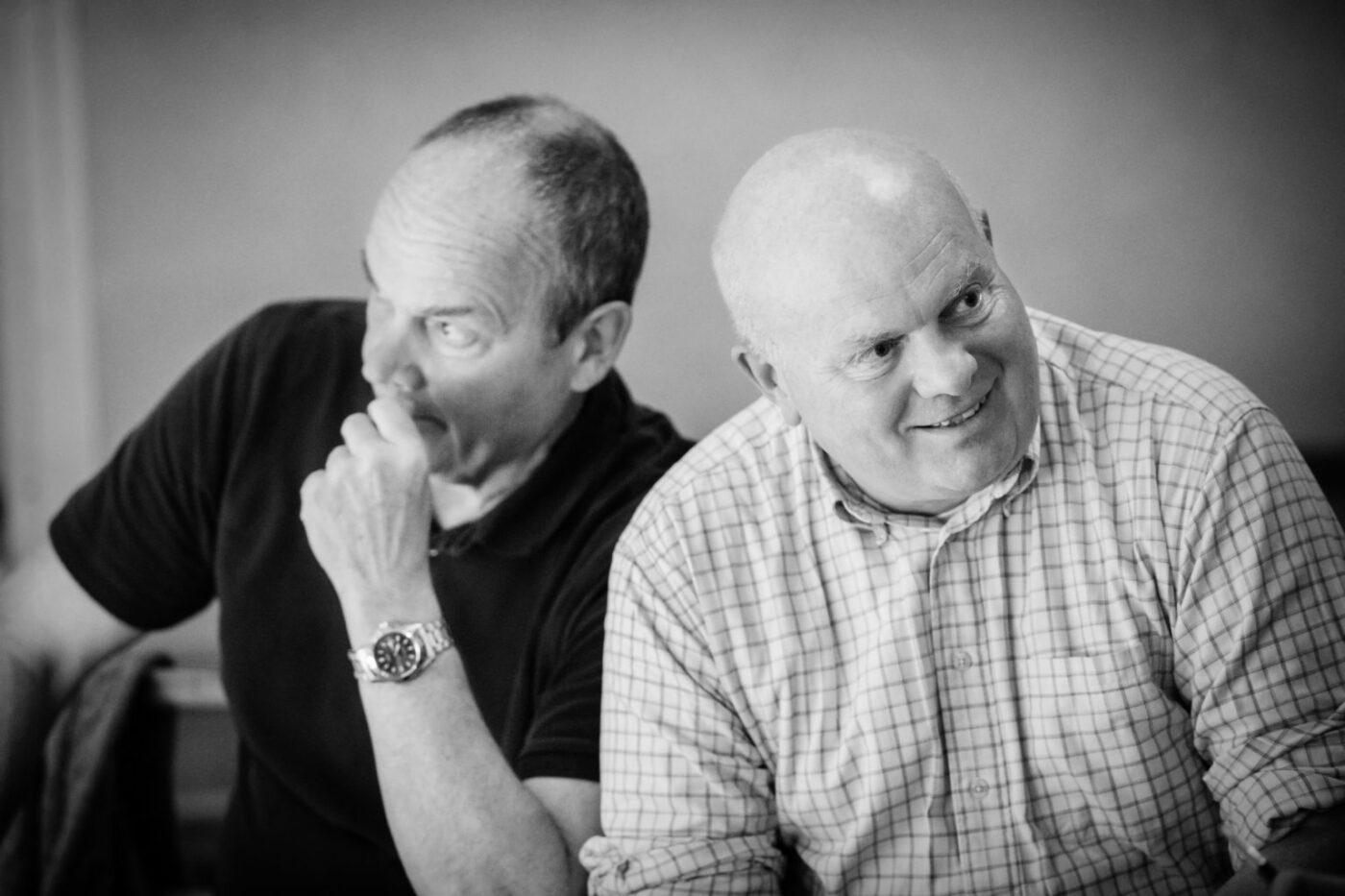Archives 2023
The Spanish Hamlet in Budapest: Declan Donnellan and Nick Ormerod – Creators of Life is a Dream
What makes this classic of Baroque Spanish drama topical? What is the difference between film and theatre? What makes the Theatre Olympics special? These are some of the questions we asked of the British creators of Life is a Dream, a production coming to MITEM from Madrid. This performance staged by director Declan Donnellan and stage/costume designer Nick Ormerod is also about whether we can tell the difference between dreams and reality.

–Though film and theatre are often referred to as related genres, few directors have made it in both. What was your first foray into cinema?
Declan Donnellan: We’ve always been fascinated by the world of film, we made our short film The Big Fish in 1992, later we were invited to film Guy de Maupassant’s novel Bel Ami, but by the time we got on board, the production was well prepared, the script was ready and shooting arrangements had been made. This made life a lot easier for us, since preparations for a film usually take a year and a half. Our film featured Budapest as Paris, and although we didn’t get a chance to revisit the Hungarian capital while shooting, we were already familiar with it, as we had been to Hungary several times and have met our director friends Tamás Ascher and Gábor Zsámbéki.
–When we compare the two genres, we’re mostly talking about different acting styles. What are the key differences between the languages of theatre and film?
DD: I’d hate to exaggerate the difference, because though there are differences, both genres have the same essence: they breathe life into something. This shared essence is a lot more important than the subtle specificities of film and theatre.
–Your book The Actor and the Target was recently published in Hungarian and in it, you write about acting in the light-hearted style of an actor reminiscing in his diary. Is the book the result of decades of observation, or did you just talk to some actors before you wrote it?
DD: I relied solely on my own observations. It’s all about the magic of acting, rather than about staging a play. Personally as a director I feel a certain responsibility to the actors and, therefore, can’t avoid thinking through issues about acting. Every now and then, actors need assistance and I must find a way to help. As directors, we must think about performance and the actor’s job, and playing together may actually help an actor at a particular moment. I think every human being is an actor. As we get older, this dynamic actually develops. It is one of the greatest discoveries we can each make and Shakespeare was very young when he first grasped this. As for Calderon and his work, I think life is not a dream! However, the only operating system available to us to lead our lives is “to act”. That doesn’t mean we lie in real life, acting is not lying! We learn from our mother by imitating the way she lives, her voice, her movements, the games she plays. Lying is not a good thing, but acting is part of our human existence.
–In December, Calderon’s play Life is a Dream had a highly successful première in Madrid. This is the production you will present at the Theatre Olympics. How does a British duo choose a classical Spanish play?
Nick Ormerod: When we choose a play, we don’t do so because we have a concept and know how we are going to stage it. In that sense, we don’t approach our work with an intellectual concept. We choose a text because we like it and because we have a presentiment about it. Calderon’s 17th century play takes a while to get close to, to appreciate its richness and mystery. Having said that, we knew in advance we were not taking any great risks with this text, since it is Calderon’s most performed play in England, one might even say it’s the Spanish Hamlet. In other words, we could safely rely on it. It’s full of surprises. I think that’s the key to our choice of play: we like working with texts that we hope will surprise us.
–Prince Segismundo, the protagonist rises from complete isolation and from having no rights to the pinnacle of power twice in a row. The story of this dramatic hero, torn by doubt between dream and reality, is open to interpretation. What could have intrigued Calderon about this subject and what makes it exciting in this day and age?
DD: What intrigues us about Calderon’s story is the eternal human condition: virtual reality has always been with us. Thanks to our imagination, we have always found exits from reality to fantasy. Interestingly great art takes us back to reality. Human nature does not change, only technology does. The latter, of course, can open up scary perspectives. But our contact with reality is rather “tangential”. We dream the world, but we sometimes get slapped in the face and have to wake up. A dream might not be the best metaphor for how we think about our lives. We live in a consumer society and we’re surrounded by ads that promise eternity to us. In this respect, Calderon’s dream world is very relevant and contemporary. This confusion between dream and reality is historically justified in the case of Calderon and his contemporary, Shakespeare, as they both lived and worked half a century before the Enlightenment. The Enlightenment gave us a lot of things, but we also lost a lot.
–You are Englishmen instructing Spanish actors, doesn’t that make things harder?
DD: The language difference doesn’t really affect our work, because every language is a lie of sorts and every word is a “traitor”. Human communication is a lot more sophisticated than the written word. Words are a fairly modern “technology”, humans communicated quite well in the pre-word ages. We communicate with far more than just merely words, we use a range of diverse communication tools, too. Herein lies the power of theatre – and this is what makes live theatre essentially different from cinema – that we are in the same space as the performers and we can thus directly receive these signals. For example, we can smell the actors – we can detect heart beat and changes in breathing even over quite a distance. Of course these ancient skills have been blunted but we can receive lots of messages this way. The irony is that words often actually separate us, or at least, they filter our messages to each other.
–You have been to several Theatre Olympics with your performances, how is this theatre gathering different from other theatre festivals?
NO: The Theatre Olympics is a great celebration of humanity, showcasing our shared values, which are threatened by virtual reality. We need to support each other because theatre is struggling to survive in the age of mass entertainment.
György Lukácsy
(27 April 2023)











